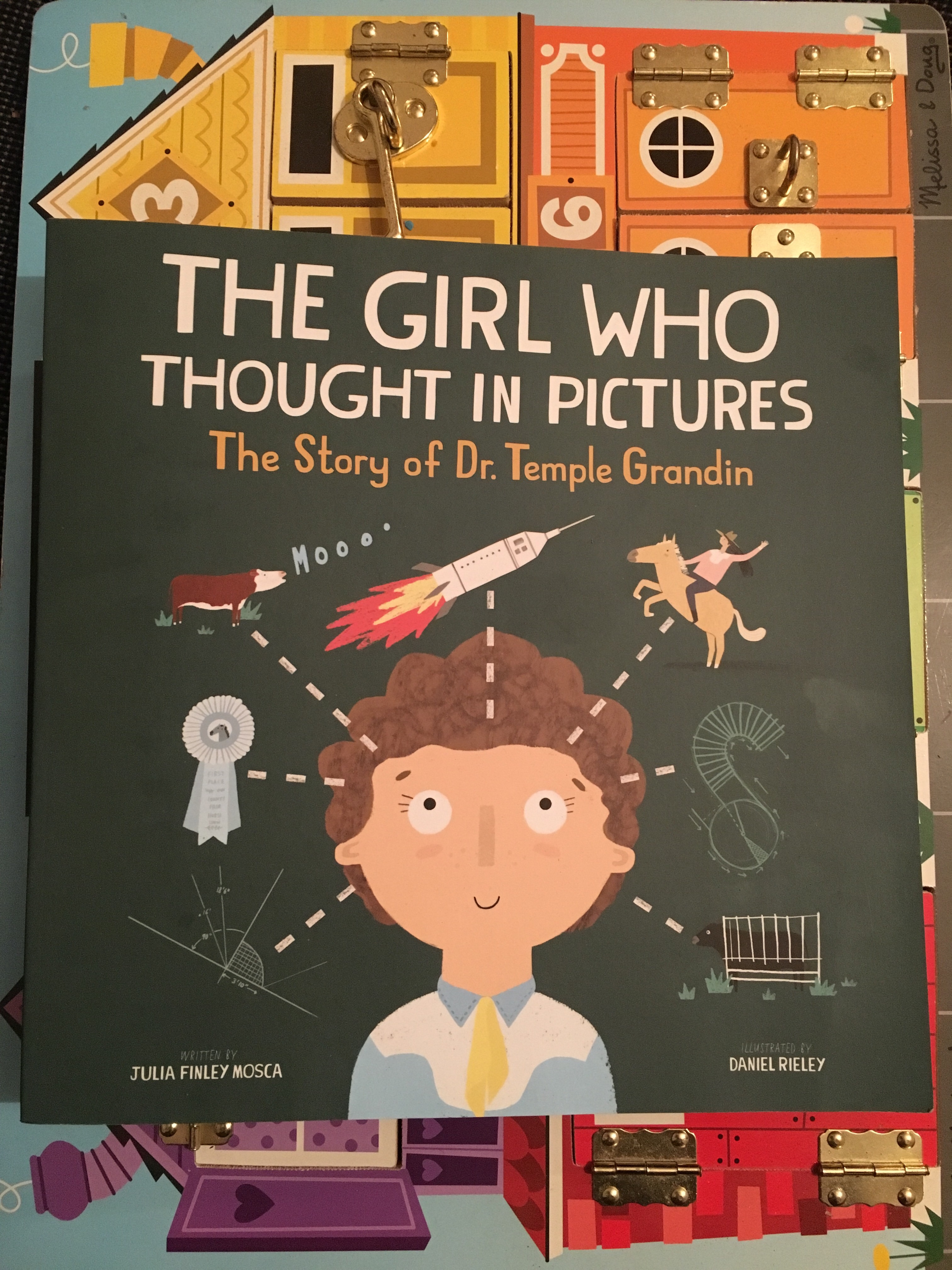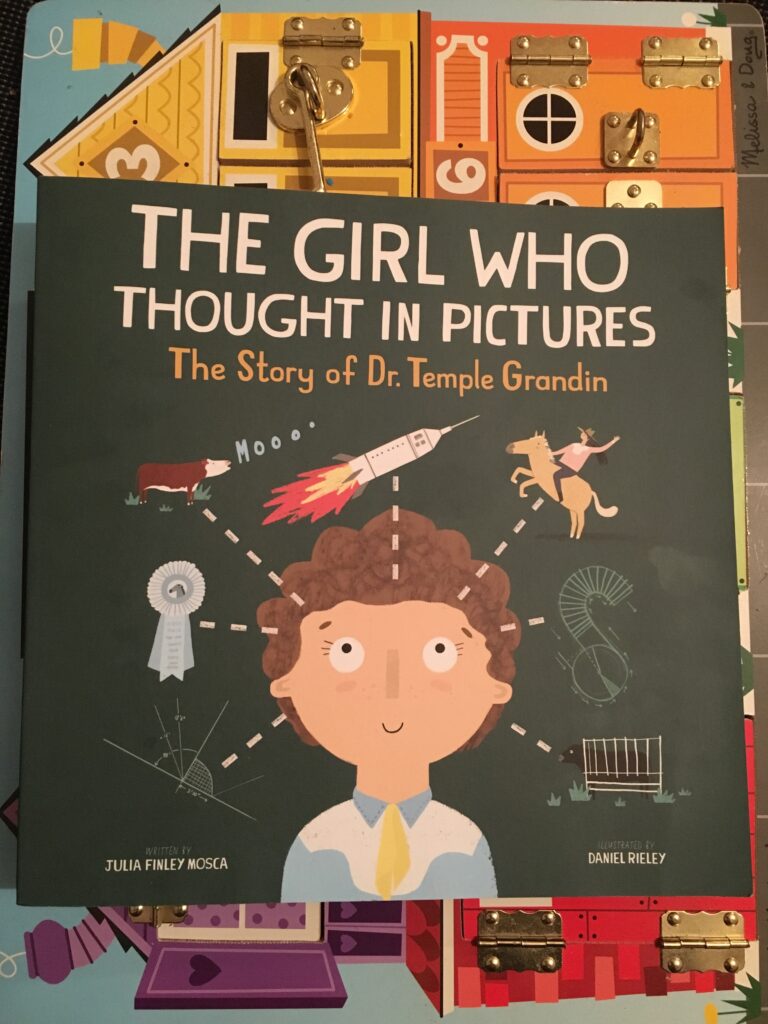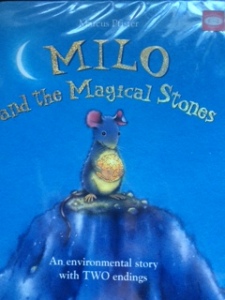With end pages adorned with cows and a dedication to ‘any child who’s ever felt alone’, we knew this book would be one we would enjoy.

Dr. Temple Grandin, who we now know as a pioneer in the farming industry, spent a lot of time researching how livestock felt as they were moved around, milked, vaccinated cared for. She came up with new ways that livestock could be transported and many of these methods are still being used today.
However, Dr. Temple Grandin also paved the way for society to realise that people with autism can function in society and contribute. Born in 1947, even with the intervention her mother sought for her, it was still difficult for her to get by in the mainstream classroom and with other people who did not understand how she felt and thought.
It wasn’t until she moved to a farm at 14 for a few months that she truly felt her calling.
The collaboration between Julia Finley Mosca and Daniel Rieley is amazing. They tell the story through words and pictures, bringing to life the emotions young Temple felt, how she saw the world and how her mind worked.
Children can see her thought processes and the time she took to solve the problems, they can see the hard work she did in order to achieve her goals and of course some real pictures so children can see what she really looks like!
Having a story that shows the development of a high achieving adult from the time they were small is so important for young children. It shows them that they can be and do anything as long as they put in the hard work and dedication.
This story shows children that being different is great as when we see the world differently, we can come up with ideas that perhaps no one has thought about before.
So, as stated in the final page of the story:
Don’t let doubt hold you back, not for one minute more. STAND TALL, and like Temple, MARCH RIGHT THROUGH THAT DOOR!
So what else can you do with this book?
Literacy: Biographies
This is a wonderful story to use as inspiration when writing biographies.
Science
Farming techniques – look beyond what we do now but compare and contrast how farming has changed over the years for the better (or the worse!?)


